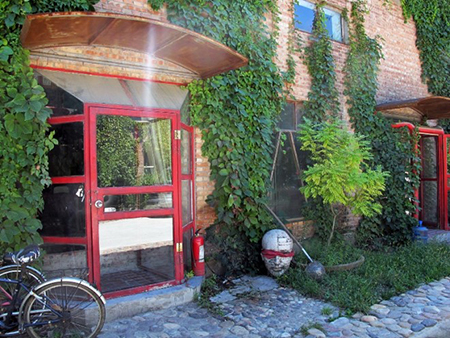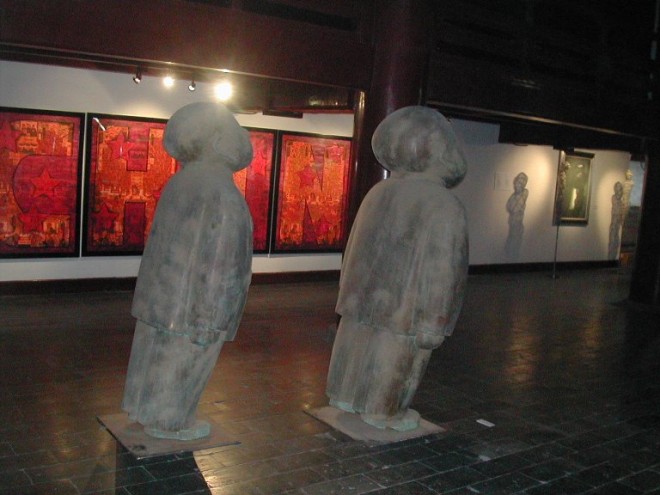Interview with Brian Wallace
Mar 19,2014
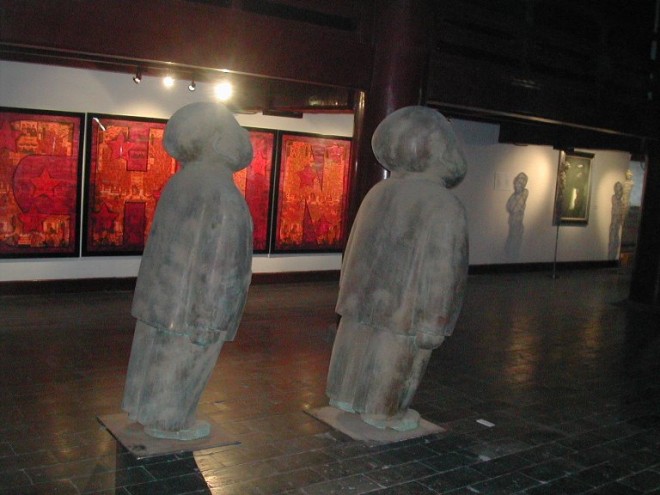
采访/撰文:爱安啊(Iona Whittaker)
2014.03.19 Wed, by Iona Whittaker Translated by Liang Shuhan
Rightly credited with founding the first foreign-owned contemporary art gallery in Beijing, Brian Wallace came to China from Australia in 1984. In 1991, after studying Chinese language and then art history at the Central Academy of Fine Arts, he established Red Gate Gallery in a historic Ming Dynasty Watchtower at Dongbianmen. At the time, the contemporary scene in China was still nascent; none of the “art districts” seen today had begun. Some 22 years on, following an anniversary tour in Australia along with a group exhibition entitled “China: Chinese—a visual explanation of life in China,” Iona Whittaker spoke to Wallace about the history of the gallery—its times, its exhibitions and the ethos that has maintained its steady course through such a potent period.
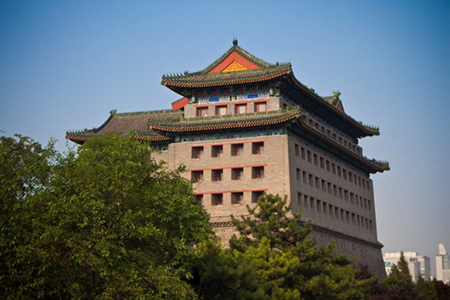
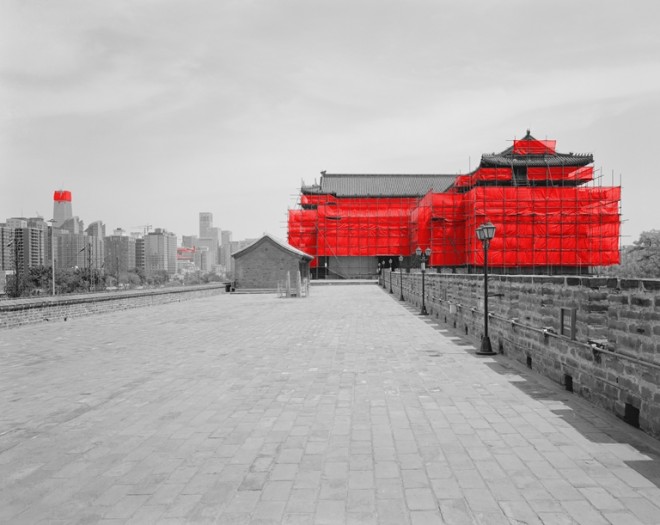
Iona Whittaker: It’s been 23 years—how do you feel?
Brian Wallace: I look back and it’s actually been 25 years of doing shows here in Beijing, so we’ve seen it right from the beginning. From the early days when the artists were just organizing themselves to do shows. At that stage there were no galleries, so there was no other support. In ’91, we opened; the next gallery was the Courtyard, and then ShanghART, five years later; then Chinese Art and Archive Warehouse (CAAW) ; in 2001, 798 started, but really didn’t take off until 2004, after SARS. Right through to now we’ve been fairly lucky, being able to ride all the way through and grow a little, as well. For me, one of the most important things is that the artists that I’ve been dealing with for 20 years, 15 years or 23 years, are still working with us. We’ve seen their whole careers develop in different places and at different levels, of course. But all of them are still practicing artists.
IW: So would you say you feel satisfied, philosophical?
BW: Certainly, I feel glad that we’ve got through things. But when I look back and think about it, yes, I am very happy to have been part of it, and to be recognised. Continually, we have artists coming to us, and now we find we have very good young artists keen to join Red Gate.
IW: The very early exhibitions that you did at the observatory and other places in the late ’80s, how did that first come about?
BW: My Chinese friends while I was at university here were artists, so I was knocking around with them all the time. Then we thought, “Where are the exhibitions?” Nobody had any clue about exhibitions, but I come from a family of organizers, and we sort of clicked. We decided to get together and try to do a show together. The ancient observatory was such an iconic location but also a very handy location for the arts community—which was the artists and the embassy people in those days; the observatory was directly opposite the embassy compound. The art work was not that aggressive. Some of it was landscape painting. There was one artist—Dagong—talking about different relationships through oil paintings. He was covering political relationships, sexual relationships… We all thought that was pretty groovy back then! We were very lucky—the Temple of Longevity, the Confucian temple and Zhihua Temple were all lying around empty; they were in quite dilapidated states, but we could use them.
IW: You seem to have a very skilful way of not being part of what look like fads. Maybe it’s because your space is outside 798? I don’t know what it is, but you don’t seem subject to the same feverishness.
BW: Stable…yes. And I’m happy that most of the artists have progressed. They haven’t kept doing the same things in that way that some of their other friends have been doing. You know, some artists have come and gone, but that is all par for the course; some of them are coming back. As I said, people are approaching us—even people who are middle-aged. A couple of the artists we introduced last year, though I’ve known them for a long time, I really haven’t done anything with them. Liang Changsheng, for example—these were very interesting shows, and now we’re looking forward to the next phase. We’ve done a lot of shows over the last 3-4 years where we’ve had guest-curators and artists coming to us to do a small group show. So what we’ve done is to look back over those 3 or 4 years at what the artists have been doing since those shows, and then selected some to approach to see if they want to come over to us.
IW: So it’s incremental.
BW: Yes, it’s not just a snap decision. I think they appreciate that, too – that someone is watching them.
IW: Your most recent show in Beijing was a visual explanation of life in China. I wonder, as someone who has lived here for so long, how you personally related to those particular views of life here?
BW: Many of the artists’ work is quite liberal—about the environment, so, I see that every day. And some of the other artists are commenting on the beautiful things you’ve got to look for here, and find, rather than just looking at today. There are many layers to living in Beijing and living in China. Me—I’m fairly easy-going, so I sort of learnt to roll with things, so I can maybe appreciate and absorb some of the things which are going on around us more easily because of my learning experience here. You know, learning not to get angry! In that sense it’s a very personal thing—if you’ve been here for a long time.
IW: What is the age range of the artists in the show?
BW: 25 to 60-ish.
IW: Is there anything in particular that you notice between the younger and older artistic observations?
BW: Well, for me what we’ve been going through in the last year or two is a generational change. It’s quite distinct to me. The older generation came out of the schools in the ’80s; they’ve seen everything. They’re take on things is very different from the younger generation. For me, trying to find the younger ones who have that maturity has been really hard. It’s only in the last couple of years that I’ve started to see people who have a very serious take or comment on what’s going on—as well as being good practitioners.
IW: Right, so that’s how you would define that maturity—it’s about being able to make a comment?
BW: Yes—it’s not just about this consumer society or the fact that as they grew up, everything has been given to them, including education and travel—even if they’re only 25. They can do anything. They haven’t had the hardships—nothing’s really happened to them, so it’s really hard to find somebody who has a strong attitude about things, or who is somehow thinking it through. Some of them are quite mature. That new generation is not necessarily defined by age—we’ve got people in their 30s, maybe even early 40s, who haven’t been in the art scene that much, and then you’ve got those who are in their 20s—using the term “generation” and defining it by age—it’s a bit tight.
IW: How do you feel your location has served you—have you been happy to be outside the main art districts (in the watchtower at Dongmianhua)?
BW: Long ago, we were the only gallery. We started the residency program in 2001, so rented different spaces, and in 2003 we had our first space in Beigao. My assistant rang up and said “Brian, come over to this place Dashanzi”—I’d never heard of it—and have a look at these spaces, because you might want one for the residency.” And I said “No, no, I don’t need any more spaces.” So, I didn’t actually go in that first wave, but looking back I would have had one of those spaces for sure! But anyway, in the end we did open a space there, in 2006. We had that for three years, until our lease was up towards the end of 2008, when the financial crisis was coming. It was still interesting, but every time we talked to the manager up there the rental price went up. In the end, we left. We still had the watchtower, so we just consolidated that. So, you know, we were very much part of it [798] for three years, and we had a beautiful white space with the saw-tooth roof, grungy floor and all that—we put on wonderful shows there. But when the crisis came it just wasn’t practical. But 798 has been one of the main catalysts for contemporary art, for sure. And it still is—and Caochangdi.
IW: Do you go there much?
BW: Um, no. But I have been recently a couple of times and have been totally surprised by the development.
IW: Well, it must be quite nice sometimes to be out of it.
BW: Well, people come down to us (at the watchtower) all the time and say, “Don’t go to 798, Brian, don’t go back!” People don’t know where to go to find the good shows—we have to give them a copy of Time Out magazine and check off the name of the galleries to look for, otherwise you get frustrated looking for them. They don’t have that struggle with us. 798 has been great, and Songzhuang [art district] has been very different—it’s also a wonderful contribution to Beijing. Then you have things like the art fairs. Over the last 8-9 years—despite the crisis and the leveling off and sorting out—it’s been a very important time for contemporary Chinese art.
IW: You started an international residency program in 2001—what, at that point, made you decide to do it—because you must, again, have been the only one?
BW: Well, we were. But before that in Australia there was Asia Link, an arts foundation. They were sending one artist to Beijing once a year, and then to other parts of Asia as well. But they would come up here with the grant in their pocket and go to a hotel, then they’d have to find a studio. They were here for three months, and by the time they had done all of that, it was time to go home. This happened year after year, and because I had the gallery, I started thinking, “Well, why do we have to do this again and again?” So we found apartments and lined up with the Beijing Art Academy at the bottom of Chaoyang Park—so we had a small studio space there and found an apartment in Tuanjiehu. That was in the days when foreigners really couldn’t live outside the foreigner-ghettos. And I was also living around there so we got an apartment for them, and put the word out; other artists came. So it took off from there.
IW: What do you feel have been the constant features—the things that have not changed throughout your work with the gallery?
BW: Well, the artists I’m interested in: they’re critical about what’s going on around them. They really think things through. That’s been steady. Sometimes when I see an artist’s work that I really like without actually knowing anything about the artist, it turns out that he might be of the same generation, the same experience—you can see it, somehow. That’s consistent, too.
IW: Is there anyone or anything that has particularly influenced you?
BW: Well, when we started the gallery, there were people around who had a lot of experience. A couple of them have passed away, but they were all very generous, saying, “This is how we did it, and this is how you shouldn’t do it.” We had no idea – it was from the ground up. I just had had a couple of exhibitions.
IW: You say you come from a family of organizers—did you ever picture having a gallery, or otherwise becoming a curator or fulfilling some other role?
BW: Getting here, I had no idea where this was going, and sort of fell into it. When we got going, it was straight into the gallery and learning about that, and then the next thing, curating, putting together shows and all the other things followed on. I’m not a writer or a theorist, but there have been other people coming through and doing that now. The practice has been there for a long time, but there are other, softer things that have been a long time coming, and people have been very critical about how slow that has been and the lack of objective criticism of the work.
IW: But for you, early on, was it clear that a gallery was what was needed?
BW: Yes, and a gallery scene. There was also a lot of support from the audiences. We were waiting for other people to come, but it took a long time. Hans van Dijk had his little space off the side of CAFA on the old campus, and he was working with Ai Weiwei early on. He would get a lot of work, and he was always jumping from one space to another; he was very important for the art scene. There have been some very significant people. But all of that was very generous. In those early days everyone helped everyone. There wasn’t any bigotry or anyone to bitch to.
IW: Do you think there’s any secret to your having weathered all the ups and downs?
BW: Well, one was advice from Ray Hughes [an Australian art dealer]; he’ s been doing this so long that he’s been through everything. He said to me before it happened, “Cut your costs and hang on,” and at the same time we left 798, so that was a good call; we cut our program back a little bit, but in practice it really kept going—we didn’t go back to a quarterly show or anything. So we’ve been pretty active through it, and I think that’s been good.
IW: This year there has been so much attention on China, what with the Armory China Focus. What do these things mean to you?
BW: Crudely speaking, they generate more buzz around contemporary Chinese art. People are still very much in a learning mode about it. People talk about the contemporary art boom, and sure, it was there, but still it’s quite nascent and there’s still a lot of work to be done—things like the Armory or a Biennial in Cuba many years ago create more interest in China and Chinese art. All these things work into it and then it flows down—you get more inquiries and more people coming over, even if it’s for some other purpose.
IW: Do you do many Western fairs?
BW: Not at the moment, no. In an ideal world, we want to do one in the US, plus Art Hong Kong and one in Europe. We’ve got all these new fairs coming in, and we’ll just let them settle down for a couple of years and see.
IW: What do you feel you are most loyal to throughout your career?
BW: Well, Red Gate and the artists! We’ve stuck by them—very rarely have there been disagreements. Touch wood, the watchtower—it’s a most exotic location. There’s different possibilities that we have, like getting the residency programs up and running—we could grow it to twice the size if we wanted to, but we don’t. Supporting the artists—there are still poor, starving artists even at Red Gate, so I’m paying rent for a few of them—ongoing cash. Recently, I also came across a publication doing documentaries of Chinese artists. I’m really interested in supporting that kind of thing. It’s good when you can.
IW: What are you excited about this year?
BW: I’m looking forward to [Art Basel] Hong Kong—though we’re not in it. Just cruising! That’s a milestone—another one. Another very exciting thing now is that for the very first time I am commissioning an artist to do a work for me. I’ve been collecting for a while, but I’ve never actually commissioned something. The work strikes me but also the artist himself. He can’t afford to do the work, so I’ve commissioned it. I’ve also got plans for travel but they’re not art-related.

